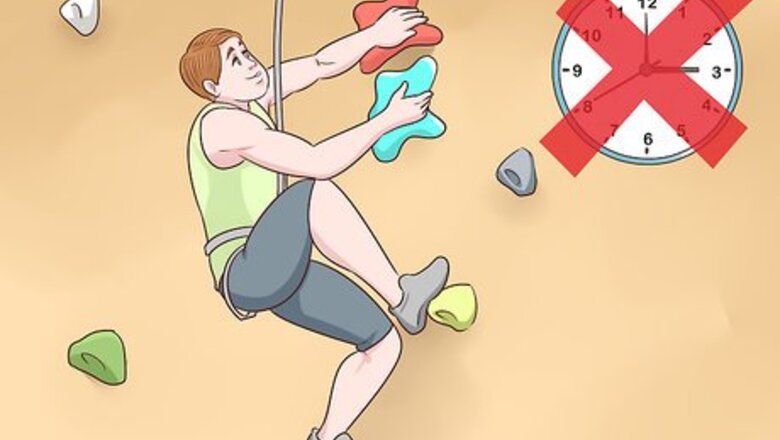
views
X
Research source
Differing significantly from outdoor natural rock-climbing, speed climbs take place on an indoor rock wall and requires less than 10 seconds of fluid motion powered almost entirely by the legs. With some practice on the fundamentals, though, you can begin to improve your climbing experience, regardless of whether you want to compete indoors or just pick up your speed outdoors!
Training on the Wall
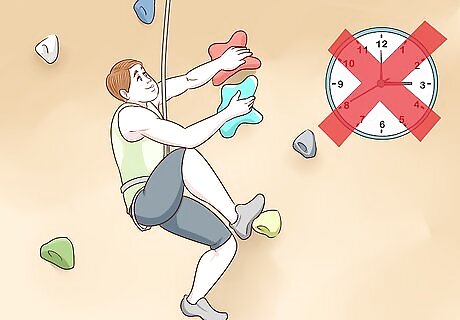
Forget the clock while you’re learning the moves. As you get better and better, you will obviously want to start timing your climbs so you can measure improvement. However, in the beginning, you need to work on getting the motions down without focusing on the time.
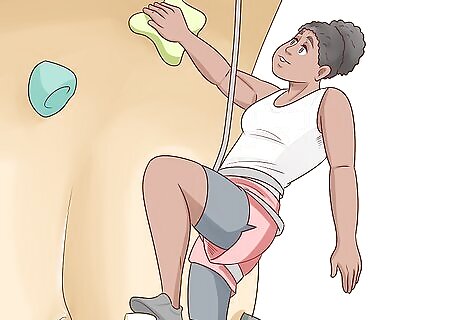
Practice fluid motion above all else. Speed climbers don’t stop to evaluate the route, hang to give their arms a break, or retrace their steps. Speed climbing relies on moving upward in a constant, fluid motion to avoid wasting energy and momentum.

Start with simple routes to practice the fundamental motions. Create a simple zig-zag route up the wall to begin with. There is no need to plan for a route that goes back and forth in this way. You can focus purely on the fluid motion as you climb. Practice working on just 6 or 7 holds at a time. The more repetition you create in working those same grips, steps, and grabs, the more fundamental it will feel as you create longer routes. Do the zig-zag route at least 100 times over the course of a dozen or so training sessions before moving onto other routes. You want to lock in the fundamental feel of rushing upwards before complicating the route or technique.
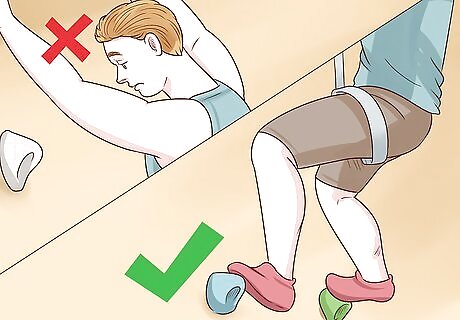
Use your legs without looking down. Speed climbing is almost purely a leg event. You need to be able to get your foot on the holds, push off, and get your momentum going upwards. If you have to stop to look down at where your feet are, you’re going to start cutting into the flow and momentum you’ve created. To avoid having to look down as you go, realize your hands are essentially pre-checking the holds for your feet as you move up. Your feet may not always follow the same grips as your hands, but often they will, and you can use the knowledge of what your hand experiences to guide your foot next.
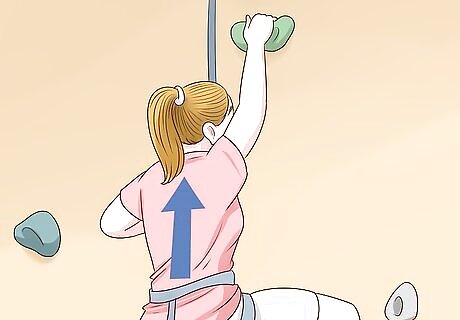
Steer your body with your hands without pulling too much. The hands are more about guiding your path as you climb. If you start to rely too much on your biceps to pull you up, you will create a disconnect in the momentum between your arms and legs. Let your hands balance your center of gravity while your legs work. This helps to make sure you control your whole body’s direction up the wall without getting out of control. Use your opposite hand to the leg that is currently pushing you up. This method helps keep your center of gravity in line as you ascend the wall.
Advancing Skills for Competition
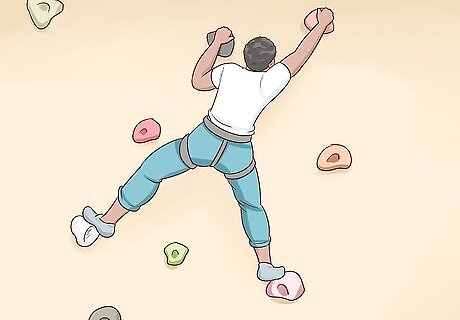
Work up to more elaborate routes. After mastering the zig-zag route, start working on offset routes that require your hands to follow different holds than your feet. This will take some getting used to since you can’t pre-examine a hold for your foot, but it will be necessary as you continue to progress. After zig-zag and offsets, try combining the 2 patterns. This will create the challenge of combining 2 different momentum patterns. Avoid routes that work too far laterally out of a centerline. During most speed climbing competitions, the routes will be identical and almost entirely vertical. While you can practice some side-stepping, it shouldn’t be your main focus.

Know your route before attempting the climb. Most competitions will release the climbing layout for you to practice on. The benefit here is cutting out any unexpected turns when you’re competing. You need to go in knowing exactly where every grip and step will be on that particular climb. Since competition routes will be 10 to 15 metres (33 to 49 ft), there really is no need to plan multiple routes. You need to try different paths to see what works quickest, but once you find the best one for you, stick to it! Trust your instinct. At a certain point, no matter how much you plan a route or practice certain steps, you just have to trust your fundamentals to kick in. If the mechanics are there, you can trust your instincts to guide your direction and footing.

Practice your route until you feel your time is competition-worthy. When you’ve found the best route, climbed it enough times to instinctively reach and step the whole path, and made sure your momentum is perfectly fluid, then you’re ready. Depending on the level you’re competing at, different times will be expected of winners. World record speed climbers have whittled their times down to less than 6 seconds for a 15 m (49 ft) course. Realize you may not be at a 6-second climb starting out, and that’s okay. Focus on your best times, and work to master and beat those.
Working out off the Wall

Do leg workouts for 45 minutes at least 3 times per week. Since racing up a wall in a speed climb is almost entirely legwork, you need to work out those leg muscles. Doing weight-lifting and plyometric exercises that focus on the legs will help to increase their endurance and force to get you up the wall. Break up your lifting days with plyometric workouts and vice-versa. You want to continue to work the muscles, but by changing up the types of workouts, your muscles will learn to adapt faster. Try lifting weights on Mondays, do a plyometric routine on Wednesday, and then lift again on Friday. Add in cardio on your off days. This helps you to stay loose and work your lungs simultaneously!
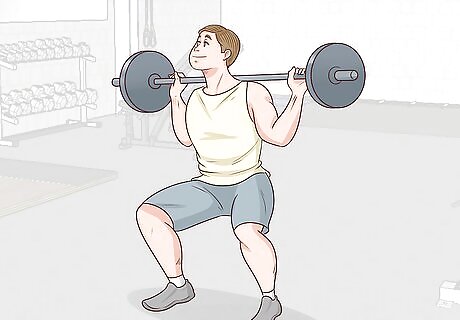
Lift weights that target the quads, hamstrings, and calf muscles. Many people think weightlifting has to be about lifting heavy, but since the event you’re training for is such a quick endurance exercise, that’s how you should train. Do lots of repetitions (20 or more per set) with lighter weight (50-75% of your 1-rep maximum). Barbell squats and lunges are great for the upper-leg muscles. Work at about 60-75% of your 1-rep maximum weight on these exercises, doing around 4-5 sets of 20 repetitions. Calf-raises, box jumps, and hang-cleans will add in the lower legs to create explosive power, similar to how basketball players train to jump higher. Like the squats and lunges, go for 4-5 sets of 20 or more reps. This will build endurance in the muscles.

Practice plyometric movements to incorporate cardio in your workouts. Plyometric movements like jumping lunges, mountain climbers, box jumps, burpees, and stair-climbers are all great at conditioning your legs to work hard in short, back-to-back bursts. This will simulate the type of work they are going to do as you speed climb. Pick out 3 plyometric exercises and do each for 1 minute, back-to-back, resting for 1 minute afterward. Complete 3 or 4 sets. Doing some of these motions with a weight vest on or in a swimming pool can help to add some resistance if it gets too easy.
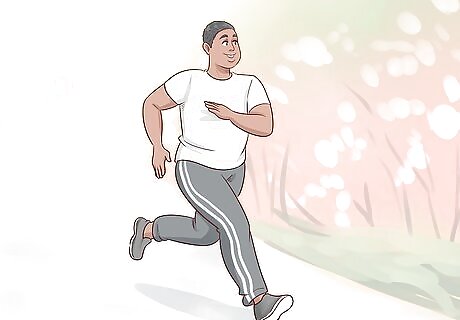
Run on your off days. Running horizontally will help you to run vertically. Mix in runs up to 1 mile (1.6 km) with shorter sprint intervals. Although there are some different movements involved in a forward stride versus an upward one, the muscles are all the same. Try trail runs or running on an incline whenever possible. This will help to activate the climbing muscles especially in the top of your legs. Run bleachers or stairs to practice climbing without needing to focus on where your feet go. Sprint up a flight, walk back down, and then repeat!


















Comments
0 comment